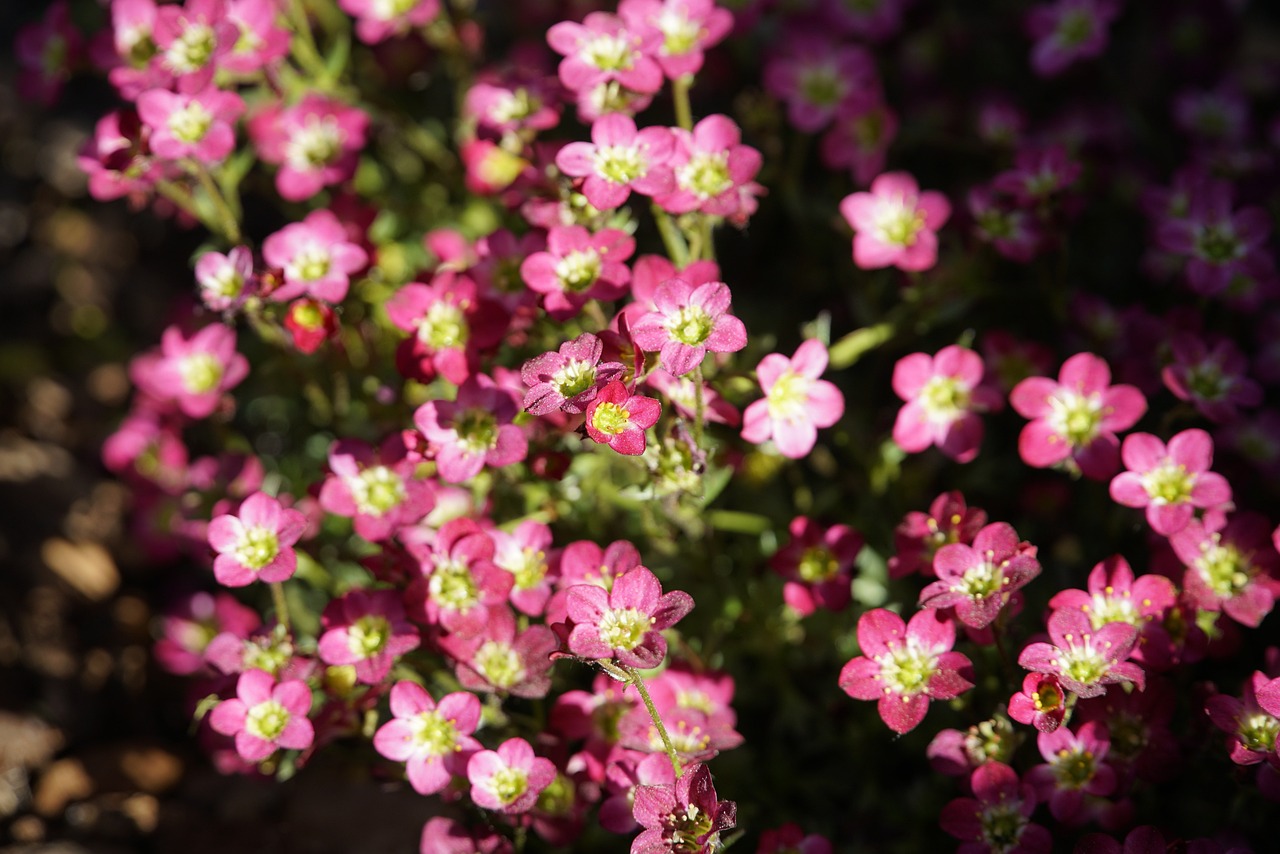
1. Introduction to Saxifraga
Saxifraga plants are native to mountainous regions of Europe, Asia, and North America. They belong to the Saxifragaceae family and are characterized by their rosettes of leaves and delicate flowers, which can be white, pink, red, or purple. Saxifraga plants are typically low-growing, forming mats or clumps, and are well-suited for rock gardens and alpine plantings.
2. Types of Saxifraga Plants
Saxifraga Stolonifera
Saxifraga stolonifera, also known as strawberry saxifrage or creeping saxifrage, is a charming plant with heart-shaped leaves and small white flowers. It is a great choice for ground cover in shady areas and can also be grown indoors as a houseplant.
Saxifraga x Urbium
Saxifraga x urbium, commonly known as London pride or none-so-pretty, is a hybrid saxifrage that produces clusters of star-shaped flowers in shades of pink, white, or red. It is a popular choice for rock gardens and edging, thanks to its compact growth habit and colorful blooms.
Saxifraga Fortunei
Saxifraga fortunei, or fortune’s saxifrage, is a perennial plant with large, glossy leaves and tall flower spikes. It produces white or pink flowers in the fall, adding late-season interest to the garden. Fortune’s saxifrage prefers partial shade and moist, well-drained soil.
3. Planting Saxifraga
Choosing the Right Location
Saxifraga plants prefer cool, moist conditions and thrive in partial shade. Choose a location in your garden that receives morning sun and afternoon shade, or dappled sunlight throughout the day. Avoid planting saxifraga in hot, dry areas, as they are not drought-tolerant.
Soil Preparation
Prepare the planting area by loosening the soil to a depth of 6-8 inches and incorporating organic matter, such as compost or well-rotted manure, to improve drainage and fertility. Saxifraga plants prefer slightly acidic to neutral soil, so amend the soil if necessary to achieve a pH of 6.0-7.0.
Planting Process
Dig a hole slightly larger than the root ball of your saxifraga plant and place the plant in the hole, making sure the top of the root ball is level with the surrounding soil. Backfill the hole with soil and water thoroughly to settle the soil around the roots. Space saxifraga plants according to their mature size, typically 6-12 inches apart.
4. Caring for Saxifraga
Watering
Keep the soil evenly moist, but not waterlogged, especially during hot, dry weather. Water saxifraga plants at the base to avoid wetting the foliage, which can lead to fungal diseases.
Fertilizing
Feed saxifraga plants with a balanced, water-soluble fertilizer every 4-6 weeks during the growing season to encourage healthy growth and abundant blooms.
Pruning
Remove spent flowers and dead or yellowing foliage regularly to promote new growth and maintain the plant’s appearance. Trim back overgrown or leggy stems to encourage bushier growth.
Dealing with Pests and Diseases
Saxifraga plants are relatively pest and disease-resistant, but they can occasionally be affected by aphids, slugs, and snails. Monitor your plants regularly and treat any infestations promptly with insecticidal soap or other appropriate remedies.
5. Propagating Saxifraga
Division
Saxifraga plants can be propagated by division in the spring or fall. Carefully dig up the plant and separate the rooted sections, making sure each division has several healthy shoots and roots. Replant the divisions in prepared soil and water well.
Seeds
Saxifraga plants can also be grown from seeds, which should be sown in a well-drained seed-starting mix and kept moist until germination. Transplant the seedlings into individual pots once they have several sets of true leaves, and then plant them outdoors once they are well-established.
6. Conclusion
In conclusion, saxifraga plants are versatile and attractive additions to any garden. With their beautiful flowers, low-growing habit, and easy care requirements, they are sure to bring beauty and interest to your outdoor space. By following the planting and care tips outlined in this article, you can enjoy the beauty of saxifraga plants in your garden for years to come.
FAQs About Saxifraga
- Q: Are saxifraga plants hard to grow?
- A: Saxifraga plants are relatively easy to grow, especially in cool, moist conditions with partial shade.
- Q: How often should I water my saxifraga plants?
- A: Water saxifraga plants regularly to keep the soil evenly moist, especially during hot, dry weather.
- Q: Can saxifraga plants be grown indoors?
- A: Yes, saxifraga plants can be grown indoors as houseplants, especially varieties like Saxifraga stolonifera.
- Q: Do saxifraga plants attract bees and butterflies?
- A: Yes, saxifraga plants are attractive to bees and butterflies, especially when they are in bloom.
- Q: How can I prevent my saxifraga plants from becoming leggy?
- A: To prevent legginess, trim back overgrown stems regularly and provide adequate sunlight and fertilizer.